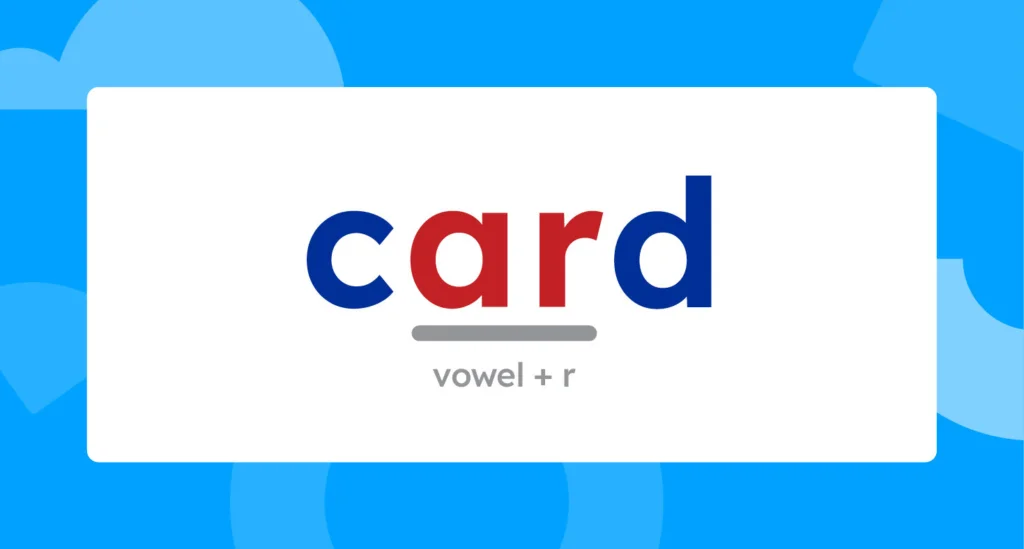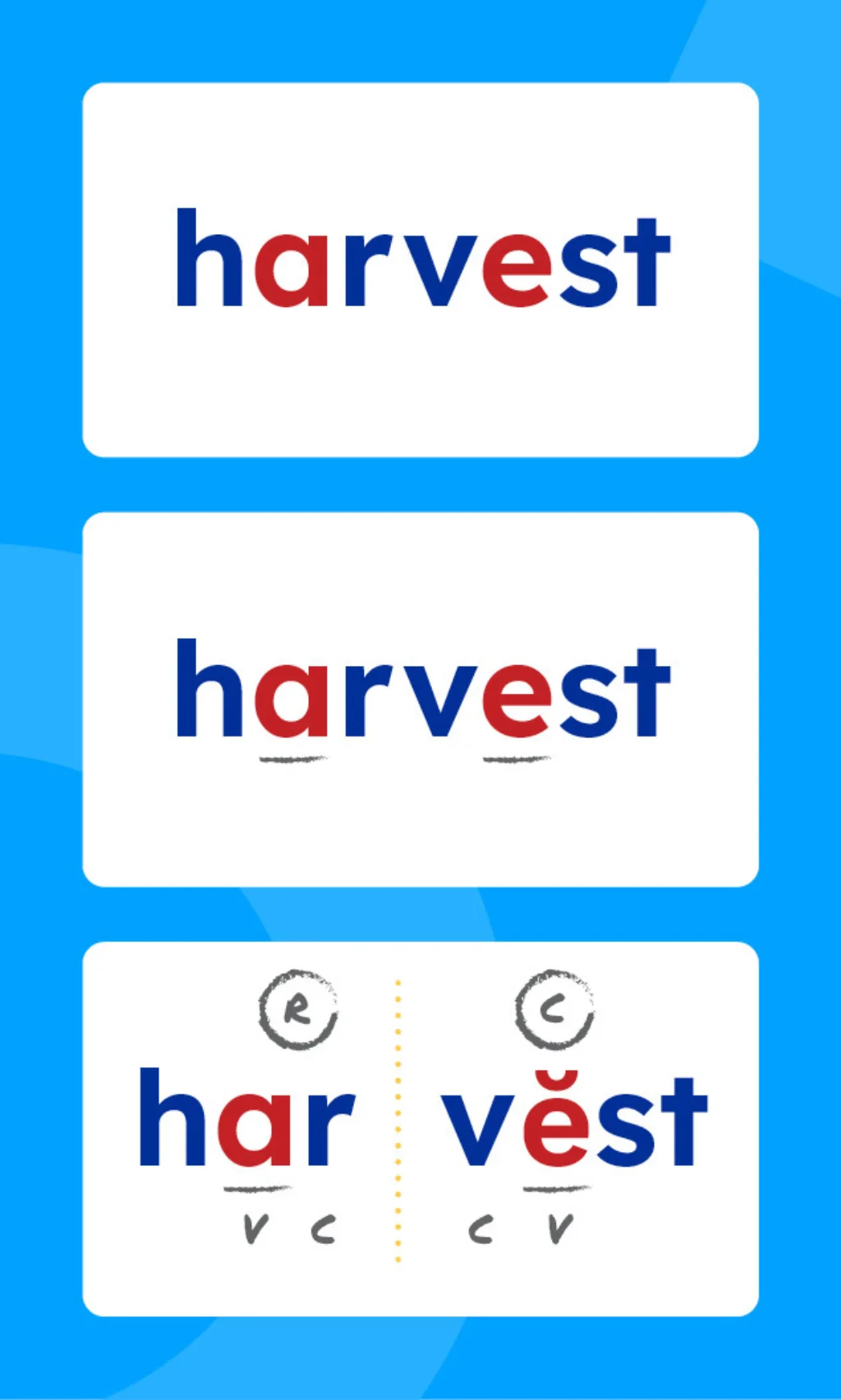1. An Overview of R-Controlled Vowels
R-Controlled Vowels Skill Explainer



Teacher Tip
Words with r-controlled vowels can be tricky because they look like closed syllables — but they're not! Remember that in a closed syllable, the vowel is followed by a consonant and says its short sound.
Words with r-controlled vowels can be tricky because they look like closed syllables — but they're not! Remember that in a closed syllable, the vowel is followed by a consonant and says its short sound.

Here’s a Quick Look at How to Pronounce the r-Controlled Vowels
/ar/ as in
/or/ as in
/er/ as in
More About the /er/ Pattern
Using Hand Motions in Teaching r-Controlled Vowels

Hide Video Transcript
Show Video Transcript
Morgan Walton: These are the motions we use to help students remember r-controlled vowel sounds ... /ar/, arm; /er/, bird; /or/, horn.
R-Controlled Vowels in Multisyllable Words

Six Syllable Types
Use this Teacher Guide as a handy reference for all six syllable types.
Use this Teacher Guide as a handy reference for all six syllable types.
In multisyllable words, r-controlled syllables can appear in different positions — at the beginning (like in perfect), at the end (hunger), or in both syllables (order).

When you introduce r-controlled vowel sounds, you should take time to review closed syllables. At this point, students know that when you have one vowel and it's closed in by at least one consonant, the vowel sound will be short. Once they understand this concept, you can introduce the idea that when the consonant following the vowel is an 'r', the syllable is no longer closed and the vowel is not short.
Give students time to practice identifying the vowel and “looking next door” to check if there is an 'r' immediately after it. Looking for the 'r' first is a quick way to recognize an r-controlled syllable.
Once students can identify an r-controlled syllable, you can explain how to mark and label the syllable to help them decode multisyllable words. We mark the syllable by drawing a line under the vowel. If the consonant following the vowel is an 'r', label it with a circled 'R' to show that the syllable type is r-controlled.

Teacher Tip
Marking and labeling words is a scaffold, not the skill. It should be used in the initial stages of introducing a new syllable type. For some students, this will be short-lived. Once they are able to decode the multisyllable word without it, you can fade it out. Others may rely on the process longer. Keep in mind that for some students, marking and labeling may create too much cognitive load, so be ready to adjust the process to support their needs
Marking and labeling words is a scaffold, not the skill. It should be used in the initial stages of introducing a new syllable type. For some students, this will be short-lived. Once they are able to decode the multisyllable word without it, you can fade it out. Others may rely on the process longer. Keep in mind that for some students, marking and labeling may create too much cognitive load, so be ready to adjust the process to support their needs
